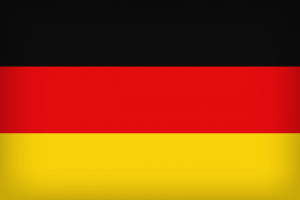Language/German/Grammar/Plural-Forms
 Հայերէն
Հայերէն Български език
Български език 官话
官话 官話
官話 Hrvatski jezik
Hrvatski jezik Český jazyk
Český jazyk Nederlands
Nederlands English
English Suomen kieli
Suomen kieli Français
Français עברית
עברית हिन्दी
हिन्दी Magyar
Magyar Bahasa Indonesia
Bahasa Indonesia فارسی
فارسی Italiano
Italiano 日本語
日本語 Қазақ тілі
Қазақ тілі 한국어
한국어 Lietuvių kalba
Lietuvių kalba Νέα Ελληνικά
Νέα Ελληνικά Şimali Azərbaycanlılar
Şimali Azərbaycanlılar Język polski
Język polski Português
Português Limba Română
Limba Română Русский язык
Русский язык Српски
Српски Español
Español العربية القياسية
العربية القياسية Svenska
Svenska Wikang Tagalog
Wikang Tagalog தமிழ்
தமிழ் ภาษาไทย
ภาษาไทย Türkçe
Türkçe Українська мова
Українська мова Urdu
Urdu Tiếng Việt
Tiếng ViệtAs a German language teacher with 20 years of experience, I know that one of the most challenging concepts for German learners is the plural forms of nouns and their corresponding articles. In this lesson, we will explore this topic and provide you with tips and tricks to help you master it.
Plural Forms
One thing that makes German unique is that nouns can have four different plural forms: "-n", "-en", "-e", and "-s". This means that there are no fixed rules to determine the plural form of a noun - it mostly depends on the gender, the ending, and sometimes the origin of the word.
Examples
Let's look at some examples to better understand this concept:
| German | Pronunciation | English |
|---|---|---|
| der Hund (masc.) | de:r hʊnt | the dog |
| die Katze (fem.) | di: ˈkat͡sə | the cat |
| das Pferd (neut.) | das pfe:ʁt | the horse |
| das Kind (neut.) | das kɪnt | the child |
To form the plural of these nouns, we need to follow different rules:
| German Singular | German Plural | English Singular | English Plural |
|---|---|---|---|
| der Hund | die Hunde | the dog | the dogs |
| die Katze | die Katzen | the cat | the cats |
| das Pferd | die Pferde | the horse | the horses |
| das Kind | die Kinder | the child | the children |
As you can see, there is no rule for predicting the plural form of words, and this can make learning German tricky. However, practice makes perfect, and the more you read, write, and speak German, the easier it will become.
Articles
Similar to the singular form, the plural form of a noun in German is accompanied by either a definite article ("the") or an indefinite article ("a/an"). Let's explore how to use definite and indefinite articles with plural nouns.
Definite Articles
Definite articles in German, like in English, indicate a specific noun. In the plural form, the definite article is "die" for all genders, and it does not change for the different plural endings.
| Singular | Plural |
|---|---|
| der Hund | die Hunde |
| die Katze | die Katzen |
| das Pferd | die Pferde |
| das Kind | die Kinder |
Indefinite Articles
Indefinite articles in German, like in English, indicate a non-specific noun. In the plural form, the indefinite article is "keine" for all genders, and it also does not change for the different plural endings.
| Singular | Plural |
|---|---|
| ein Hund | keine Hunde |
| eine Katze | keine Katzen |
| ein Pferd | keine Pferde |
| ein Kind | keine Kinder |
As you can see, "keine" is used for both masculine and neuter nouns, which is different from English. For feminine nouns, "keine" is the same as the indefinite article in the singular form - "keine Katze" means "no cat".
Conclusion
In conclusion, the plural forms of nouns and their corresponding articles in German can be tricky to master, but with practice and exposure to the language, it can become second nature. Don't be afraid to make mistakes - in fact, they can be valuable learning opportunities!
Remember that German is a complex and rich language that incorporates cultural traditions and interesting facts. The more you learn about German culture, the more interesting and engaging your language study will become.
Sources

